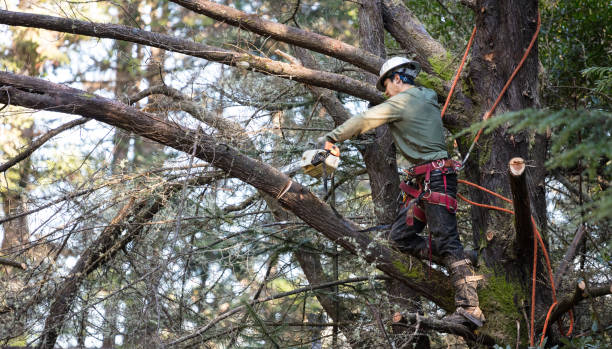As a homeowner, you might unknowingly neglect crucial aspects of caring for your trees throughout the changing seasons. From understanding the intricacies of spring pruning techniques to mastering the art of providing adequate summer watering, there are vital tips you should be aware of to ensure your trees flourish. But don’t stop there; fall holds its own set of considerations that could make all the difference in the long-term health of your tree canopy. Stay tuned to uncover these essential seasonal tree care insights that could transform your tree maintenance game.
Spring Pruning Techniques
When pruning trees in spring, remember to focus on removing dead or damaged branches for optimal growth and health. This is a crucial step to ensure your trees thrive throughout the year. Start by inspecting the tree for any limbs that appear lifeless or broken. If left unattended, these branches can hinder the tree’s growth and even spread diseases. Pruning them away allows the tree to redirect its energy towards healthy growth.
Make clean cuts close to the main trunk or a healthy lateral branch as you trim. Avoid leaving stubs, which can become entry points for pests and diseases. Additionally, pruning during the spring allows the tree to heal more quickly, reducing the risk of infections. Remember to use sharp and clean tools to prevent unnecessary damage to the tree.
Summer Tree Watering Guide
Proper watering is essential for maintaining the health and vitality of your trees during the summer months. As the temperatures rise, your trees may require more water to thrive. Watering your trees profoundly but infrequently is crucial to encourage strong root growth. Provide enough water to penetrate the soil to a depth of at least 6-8 inches. This will help the roots to grow deeper into the ground, making your trees more resilient to drought conditions.
Watering your trees in the early morning or late afternoon in the summer is best to reduce water loss through evaporation. Be mindful not to overwater, which can lead to root rot and other issues. Pay attention to signs of underwatering, such as wilting leaves or browning at the edges. Adjust your watering schedule accordingly based on the specific needs of each tree species in your yard.
Fall Fertilization Tips
For optimal tree health in the fall season, ensure timely fertilization based on your specific tree species’ needs. Different trees have varying fertilization requirements, so it’s crucial to understand what your trees need to thrive during the fall months.
Deciduous trees, for example, benefit from a balanced fertilizer with a higher nitrogen content to support root growth before winter sets in. On the other hand, Evergreen trees may require a slow-release fertilizer to sustain them through the winter months when nutrient uptake is lower.
When applying fertilizer in the fall, water your trees adequately before and after fertilizing to help the nutrients penetrate the soil and reach the roots effectively. Avoid fertilizing too late in the fall when trees prepare for dormancy, as this can stimulate new growth that may not have enough time to harden off before winter.

